Tom Brady Sleeps On Money
I guaranfuckingtee you Tom Brady sleeps on a mattress that costs easily more than twice whatever shocking price the Washington Post is pretending to be shocked by.
"Pure Michigan," Troubled Waters
by Meghan O’Gieblyn
If you live anywhere along the great swath of the Rust Belt, you’ve probably seen the television spots. There are a dozen or so variants, but each ad begins in the same manner, with cinematic piano music and sweeping, aerial shots of lighthouses and crashing waves. They show beaches of unblemished sand and kids cannonballing off floating docks. The narration is reminiscent of the copy found in certain resort brochures in that it seeks to not merely describe the locale but to evoke an entire experience: “The perfect summer has a voice…” begins one. “It whispers one more game, one more swim, one more round.” The ads are paid for by Travel Michigan, a division of the state’s economic development corporation, and end, always, with the tagline “Pure Michigan.”
About a year ago, my husband and I, who have spent most of our adult lives in the major cities of the Midwest, moved to Muskegon, a small town on the western coast of the lower peninsula. The ads, which air regularly in Milwaukee, Cincinnati, Indianapolis and Chicago, air here too. I suppose they’re trying to reach people who are passing through. Or maybe the ads are meant for us, the residents, as a morale boost of sorts, a reminder that life here is good. Muskegon is an old lumber town whose economic telos ended the day Chicago discovered steel, but it has persisted through several recessions and decades of industrial decline. I grew up here, and my husband and I moved back to be closer to family, though I suppose we were also drawn by the prospect of clean air and solitude, of freshwater swims along the eerie, Galapagos-like stillness of deserted beaches. On some mornings in early summer, the shallows along the shoreline are like glass, the water so clear it looks chlorinated.
While the Pure Michigan ads pay homage to places all over the state, a great deal of the footage features the western shoreline of Lake Michigan, from St. Joseph all the way to the Upper Peninsula. There are shots of canoes traversing the oceanic blue coastline along Sleeping Bear Dunes and of anglers roll-casting in shaded tributaries. The ads clearly convey that this is a place of water, and that the water is, as the tagline suggests, pure. “Water:” a deep male voice intones. “We take our showers with it, we make our coffee with it, but we rarely tap its true potential and just let it be itself, flowing freely into clean lakes, clear streams, and along more freshwater coastline than any other state in the country.” It’s not impossible to imagine the voice, coupled with aerial shots, as belonging to God himself.
In fact, it belongs to the actor Tim Allen, a Michigan native whose longtime role as Tim “the Toolman” Taylor established him as the quintessential father figure of Middle America, and whose warm baritone has lent the ads what Forbes magazine called “a mystical power.” (I suspect the effect only lands for some — my younger sister hears Buzz Lightyear). The piano music is likewise lifted from the movies, from the soundtrack of the 1999 film The Cider House Rules. The song evokes the kind of autumnal sentimentalism that animates Starbucks ads and late-career Diane Keaton films.
The ads, which are now entering their tenth year, have proved the most successful tourism campaign in the state’s history. Every buck spent on the Pure Michigan ads has returned to the state almost seven dollars in tourism revenue, and the record number of visitors in 2014 was widely trumpeted as the fruit of the campaign. There are now Pure Michigan coasters, sweatshirts, golf divots, and boat bags. You can get a custom license plate emblazoned with the slogan. On Facebook and Instagram, users post photos of sunsets and buckets of ripe apples appended with the hashtag #puremichigan. The campaign has, in other words, radically transcended its initial effort to entice visitors to the state and has turned Michigan into a lifestyle brand.
When I was growing up in the 1990s, the state slogan was the more prosaic “Say Yes! To Michigan,” a phrase that made it seem like the state was a proposition to vote for at the next midterm election. It came about in the 1970s, when deindustrialization left Michigan with the highest unemployment rate in the country, and young people fled in droves to seek work elsewhere. (Ironically, that slogan is now best remembered by people of my generation as the title of a song by Sufjan Stevens, who left the state for Brooklyn.) While the state’s economy has stabilized somewhat since that nadir, Michigan has been unable to prevent its educated youth from leaving. It is one of only four states in the nation that has fewer college graduates now than it did ten years ago.
I’ve long suspected that the Pure Michigan campaign owes its success, in part, to reaching those exiles — the state’s prodigal children. A friend of mine, who spent her twenties working a high-stress job at an advertising firm in Chicago, told me that on especially bad days, after an hour-long commute back to her basement apartment, she would hole up in her bedroom with her laptop and watch the ads, one after another, and weep with homesickness.
“Carpools, conferences, microwave dinners,” Allen intones. “They blur one into the next. We lose ourselves in the fog in everyday life, and drift away from what matters.” This is perhaps the most popular of the campaign’s television spots, “Lost and Found,” focusing on Michigan’s iconic lighthouses. It aired so frequently a few summers ago that I still know its copy by heart. According to Allen’s dulcet tones, the “fog of everyday life” — the fog of late-modernity — can be dispelled by “the light of more than one hundred lighthouses burning through that fog, and beckoning us back to what’s real and true.”

Michigan has recently been in the news for a more troubling kind of fog. In March, Newsweek reported on toxic pollution in River Rogue, one of Detroit’s southern industrial suburbs. The city is a bleak landscape of gas flares and smokestacks, and its air and water have been besieged by an unholy legion of chemicals: benzene, sulfuric acid, hydrochloric acid, methanol, and ammonia. The main culprits are two DTE Energy plants and a large steel factory. The plants are so dirty they regularly burnish the sky a deep orange hue and emit so many asthma-inducing toxins that the neighborhood has spawned a bootleg market for cheap inhalers.
The story drew national attention in part because it came on the heels of the Flint water crisis, which was declared an emergency in January (the Newsweek article was subtitled “Flint Isn’t Michigan’s Only Disaster”). All the horrific anecdotes coming out of Flint are by now well known: the bureaucratic apathy, the government cover-ups. The water was so polluted with lead that all children under the age of six were declared poisoned, and a local pastor stopped using it for baptisms.
It’s tempting to view the Pure Michigan ads as a particularly Orwellian form of propaganda — or, at the very least, a deft act of corporate whitewashing. The poetic irony has not been lost on the residents of Michigan, some of whom have made parody videos of the travel ads, focused on places like Flint and Detroit. In the comments section of a local news site, one resident offered up an acronym to describe “pure” Michigan under Governor Rick Snyder: “Pillaged, Upended, Raided, Emaciated.”
Both pollution scandals took place on the southeast side of the state, a region that frequently makes the national headlines for pollution, corruption, and crime; Pure Michigan lies conveniently elsewhere. Tim Allen is from the Detroit area and has been an occasional booster for the city’s revival, but when he was asked whether the Pure Michigan ads could lure millennials back to the state, he diverted attention to the coastline. “You have to show them some of the boardwalk, beach type of communities, like Saugatuck. And the National Cherry Festival in Traverse City,” he said. Unlike the old Say Yes! campaign, which appealed to a sense of political obligation, the Pure Michigan ads ask only for aesthetic appreciation. If the children are to return, it will not be to rebuild the state’s moribund cities but to retreat into its bucolic peripheries.
If the pollution scandals have failed to tarnish the Pure Michigan brand, it’s because they don’t in any way disrupt the foundational myth of the ads: that the world can be neatly divided into two kinds of places. There are the fast-paced centers of industry and greed, where we are forced to do our bidding, and there are the pastoral retreats where we can find ourselves and, perhaps, be forgiven. The dichotomy is implicit in the ads’ many appeals to viewers who are blinded by the fog — real or metaphorical — that pervades our cities. “As life starts moving faster and faster, we need to make a choice:” say Allen, “to move faster with it, or to step off every now and then.”
This idea that one can simply “step off” the path of modernity and retreat into the wilderness bears a long lineage in the American imagination, from the transcendental creeds of Walden to the Romantic allure of primitivism in all its forms. In his formative history of Chicago, Nature’s Metropolis, William Cronon notes that the Midwest has often been characterized by a false division between the Fair Country and the Dark City, “the one pristine and unfallen, the other corrupt and unredeemed.” Late-nineteenth century novelists like Hamlin Garland, Frank Norris and Robert Herrick wrote about the rites of passage by which young people would leave their rural homelands to find work in Chicago, amid the stale air, the smoke, and the slaughterhouses, only to find themselves longing for the purity of the lands of their youth. Disconnected from the natural world, Cronon argues, it became necessary for these urban transplants to maintain the myth that it was possible to escape into the wilderness — and in doing so, exculpate themselves from the dirty business of modernity.
To believe in this myth, though, is to ignore the actual extent to which human activity reshapes the natural world. The Great Lakes, which provide drinking water to over 40 million people, are hardly wellsprings of purity. Over the past decade, loopholes in the Clean Water Act have turned the waters of Lake Michigan into what one environmental report referred to as “a witches’ brew of pollutants.” Temperatures in the Great Lakes have been warming since the late 1990s, and environmentalists predict lower water levels, drought, and a decline in biodiversity.
There was a time when I loved the Pure Michigan ads because they mirrored the way the terrain of my childhood existed in my imagination. But when you live here year-round, it’s difficult to sustain the illusion. You begin to notice things: the frequent beach closings due to E. coli, the toxic algal blooms that marbleize the shallows of lakes with neon green foam. When I was a child, Lake Michigan would freeze each winter far into the perceivable distance. The ice covered more than half the lake and was thick enough that you could walk for miles toward the horizon. This past winter, only a thin lip of ice extended over the shoreline and was gone by early February.
Unlike the scandals in Flint and Detroit, which can be pinned on corruption and corporate greed, reports about drought and dead zones point to no clear villain. It’s difficult to read about them without feeling implicated. Still, these observable fluctuations are subtle, and it’s easy to dismiss them as the product of el Niño, or the meteorological fickleness that has always characterized this part of the country. As summer approaches, there are still days when the landscape resembles the image of itself reflected in the Pure Michigan ads, when sunrise finds the beaches empty and the water along the shoreline a serene and crystalline blue. In the light of a glorious morning, it’s tempting to believe that this is a place set apart: that the water itself is redemptive, that it will make us clean.
Is This "Is This The Next Hamilton?" The First "Is This The Next Hamilton?"?
Congratulations to the folks at OZY (me neither), who currently own the SEO on “IS THIS THE NEXT ‘HAMILTON’?”
Playing By Pyongyang's Rules
by Aaron Fox-Lerner

Of the roughly five thousand Western tourists who go to North Korea every year, up to half will pass through the office of Koryo Tours, the most popular and longest-running tour operator to the Democratic People’s Republic of Korea. Tucked away in a residential courtyard in the otherwise glitzy shopping district of Sanlitun in Beijing, the office is decorated with posters of North Koreans smiling, laughing, shouting in victory, or staring resolutely ahead. “We try to avoid the ones that are too viciously anti-American,” Koryo founder Nicholas Bonner told me. The tourists receive a briefing and warnings — “Don’t wander off. It’s illegal. Don’t underestimate the feeling people have for the leaders.” — before traveling on from China to North Korea. They are escorted everywhere by guides and minders, and they visit attractions like the Arch of Triumph, Revolutionary Martyrs’ Cemetery, and North Korea’s largest bowling alley.
If you’ve read a news story about North Korea that didn’t involve sanctions, gulags, or nuclear weapons, there’s a fair chance it had some connection to Koryo Tours. They bring foreigners to the Pyongyang Marathon, co-ordinate the Pyongyang International Film Festival, and provide information for Lonely Planet and Rough Guides. They sold tickets for the Slovenian industrial band Laibach’s tour of the country last year, and helped co-ordinate the New York Philharmonic’s 2008 visit. Through tourism and media-friendly cultural exchange, Koryo promises a window onto the world’s last truly Stalinist state.
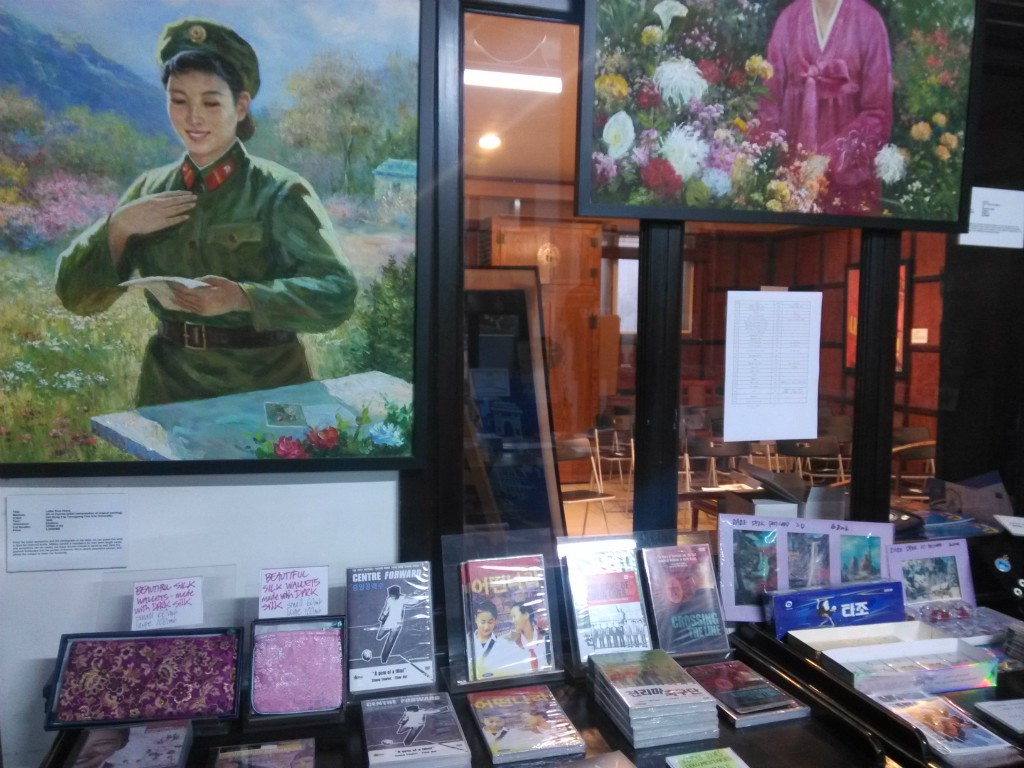
Bonner is a middle-aged Englishman with a cheery, easy-going demeanor. He started offering tours in 1993 with his friend Joshua Green, who was running the Pyongyang branch of a courier service at the time. The country had only been open to Western tourism since 1987. “One of the North Koreans [whom Green was friends with] said, ‘look I work for a travel company and we’ve got no tourists.’ So that was our excuse in,” Bonner explained.
Until the early aughts, the company had little competition. Now they’re part of a small crowd of tour operators including budget option Young Pioneers, US-based Uri Tours, and UK-based Lupine Travel, among about a dozen others. All foreign tourists to North Korea must coordinate with North Korea’s state-owned travel companies, and groups or individuals are accompanied at all times by North Korean guides who set the agenda. Koryo tries to set itself apart by emphasizing its experience and connections. Its media-friendliness and knack for attaching itself to events surely don’t hurt either.
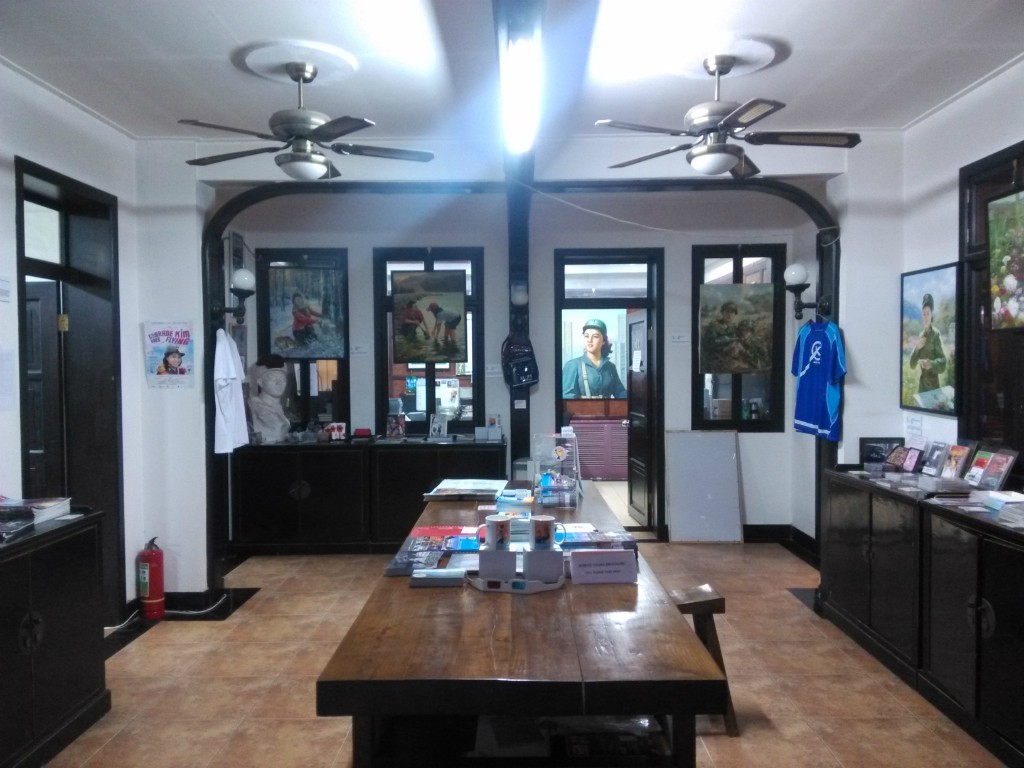
Koryo also offers tours to other unconventional locations like Russian prison towns and the Central Asian dictatorship of Turkmenistan, but it’s best known for its North Korea service. “It’s not just supposed to be disaster tourism. It’s dark tourism, I guess, in many cases,” Simon Cockerell, Koryo Tour’s general manager, said. “But it’s not misery tourism. I think there is a difference. And I think we’re on the right side of that, I hope.” Where Bonner speaks in airy tones and has a tendency to ramble, Cockerell, a fellow Englishman, is direct and clear, speaking in practiced soundbites. He started working for Koryo in 2002 after meeting Bonner at an amateur Beijing soccer league, and marked his hundred and fiftieth trip to North Korea earlier this year.
Koryo’s promotional materials stress their record of safety in visiting what they bill as “the world’s most mysterious country.” Bonner told me that they have a vetting process for their tourists, and have turned down those whom they thought might cause problems, including potential tourists who came across as too pro-regime in conversation. In general, both Bonner and Cockerell referred to the trips as “interesting” or “fascinating” more often than “fun.”

This March, Otto Warmbier, an American student at the University of Virginia who visited the country with Young Pioneers, was sentenced to fifteen years of hard labor for stealing a banner from a hallway in the Yanggakdo International Hotel, one of the only hotels open to foreigners in Pyongyang. To some Westerners, Warmbier’s real crime was traveling to North Korea in the first place. “Please Cancel Your Vacation to North Korea,” opined a Korean-American essayist in a New York Times. Cockerell, while quick to note he doesn’t agree with the arrest or harsh sentencing of Warmbier, bristled at the idea that there is any danger in visiting the country. “There has never been a case of any tourist being arrested for nothing. There’s always something…we tell people in the strictest possible terms, no ambiguity whatsoever, don’t break the law.” North Korea has a history of holding foreigners for minor offenses. Robert Boynton’s book about North Korea’s bizarre history of foreign abductions, The Invitation-Only Zone, is a great way to sour potential tourists on the idea of going. Boynton told me last month, “Frankly, I believe there should be a travel ban for Americans.” Tourism, he said, not only “plays into the hands of the regime,” but it also “exacerbates the situation by giving them a steady supply of would-be hostages.”
The ethics of traveling to North Korea have long been debated, with those in favor saying that even small, outside contact can help change the country, and a visit can help you learn about it. Barbara Demick, the author of Nothing to Envy, expressed caution about traveling to North Korea in an email to me, but also noted that “you can still get glimpses of people’s lifestyles if you look carefully. On trips to the outskirts of Pyongyang, I saw barefoot children and people collecting weeds at the side of the road out of bus windows. The North Koreans you meet are all official guides, but it is still interesting to talk to them.” Most debates over ethics and tourism center on how visitors can end up changing a place for the worse: local traditions rendered inauthentic, cities gentrified, environments despoiled. The debate over North Korean tourism, however, centers on how to more effectively change the country for the better.
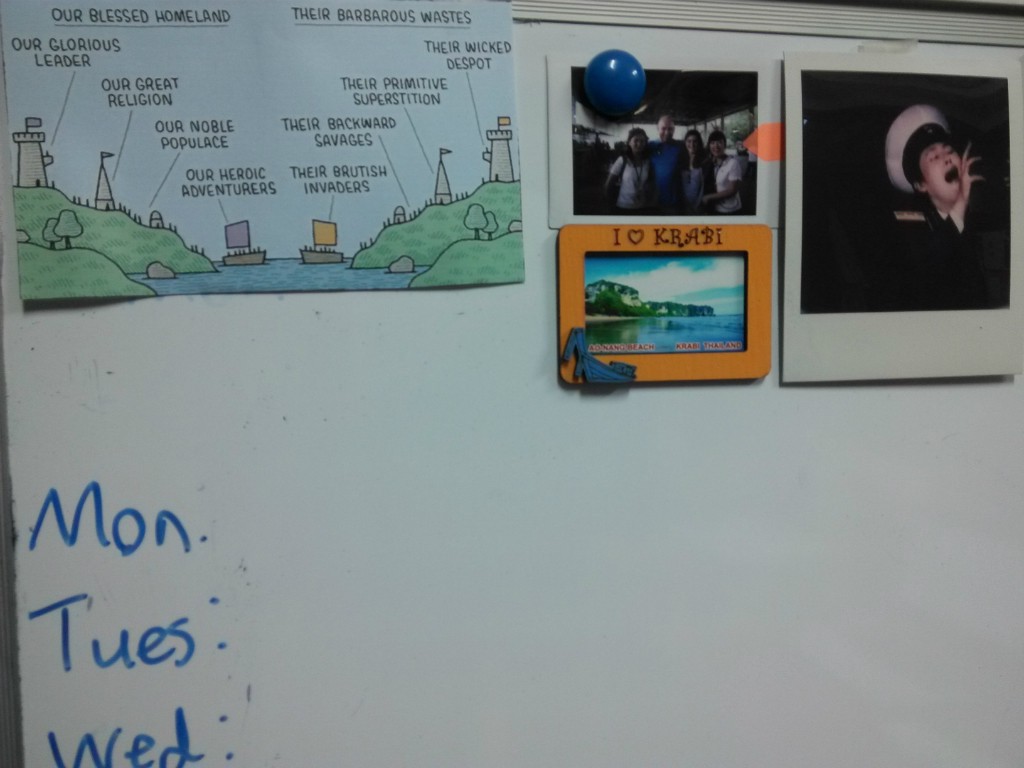
Only around five thousand Westerners visit North Korea every year. That’s about half as many visitors as the Empire State Building gets in a day. Cockerell argues that tourism revenue is far from central to the regime: “It has industry and trade, even with the sanctions. So if tourists stop going, the result will not be the crumbling of the North Korean state, it will just be that five thousand fewer Western people per year will have any exposure to North Koreans at all…It’s not a question of moral relativism. Tourists don’t support the North Korean state, nor do they want to support the North Korean state. But thousands of people have jobs because of tourists.” But his argument depends on the number of tourists remaining small. The country has an officially stated goal of growing the number of annual tourists to two million by 2020, which Cockerell dryly described as “aspirational” given the lack of infrastructure and policies. If North Korea were somehow magically able to hit that goal, it would mark a notable rise in income for the state.
Koryo’s role in North Korean tourism is well known, but its media-friendly promotion of the country goes largely overlooked. It has been involved in arranging art projects, feature films, documentaries, musical tours, and sports matches. Bonner explained by way of saying, “there’s no one else to consult, [we’re] the only people there.” He’s being modest — at times, Koryo Tours can feel like a de facto soft power arm for North Korea, and all of its projects made in the country are subject to the dictatorship’s strict censorship. In 2011, Bonner co-directed Comrade Kim Goes Flying, which he billed as a girl-power rom-com for North Korean audiences. I wondered whether the film’s trouble-free vision of North Korean life might not be propaganda, but he argued that it was worth playing by the regime’s rules to produce a purely entertainment-oriented, feminist-leaning film, which North Koreans would otherwise never see.

Matjaž Tančič, a Beijing-based Slovenian photographer (and a friend of mine), worked with Koryo Tours for a portrait series that was later shown in Pyongyang and showcased in The Guardian and CNN. He described shooting it to me as a constant attempt to avoid portraying the big attractions his guides wanted in favor of ordinary people. That said, even with the back-and-forth between him and the guides, they still determined where he went and whom he could shoot. Tančič pushed back against the idea that his work could be seen as propaganda: “Just the way I didn’t shoot them happy or smiling, but if they were uncomfortable, it showed their human side, you know? I didn’t feel it was propaganda at all. Just the context helps: where you shoot it, where you put it.”
A series of documentaries Bonner produced with director Daniel Gordon prove just how much can still be achieved within the state’s limitations. Their 2004 film A State of Mind follows a couple of young girls who say things like “We have to endlessly hate the US and fight them to the end” as they prepare for the country’s mass games. The filmmakers even managed to be allowed into people’s homes, which include the infamous state radios that can be turned down but not off. Crossing the Line, which came out in 2006, is damning. It focuses on an American named James Joseph Dresnok who defected from the Army to North Korea in the 1960s. At one point, Dresnok brags about getting full rations at a time when hundreds of thousands of ordinary North Koreans were starving to death.
Koryo’s close connections and long history have enabled its fantastic access, but Bonner and Cockerell both minimized their level of connection to the North Korean government. “It’s all indirect,” Cockerell said. “You only talk to your partner and your partner passes it on. It’s hard to go above someone’s head. You don’t really have the connection to the people above them, and no one really knows how far up the ladder everything goes.” Boynton praised Bonner’s documentaries, but had questions about the access required to make them: “One thing I’m struck by is that anyone who wants to maintain good relations and the ability to go there and come back, has to censor himself.” When I brought this up with Bonner, he said he simply focused on the stories he wanted to tell. That may be true, but selective focus can still qualify as its own form of self-censorship.

One of the strangest realities of North Korea is that the people who cover or study the country the most are often unable to actually enter it. Demick said she went multiple times in the past but hasn’t tried to go since her book came out. Boynton was once scheduled to go, but had his invitation rescinded over a piece he wrote on the country’s digital underground. Rob York, chief editor of specialty site NK News, similarly told me he didn’t think he’d be let into North Korea because he’s written about its human rights violations. About 130 journalists were invited into the country via direct visa application for its party congress this month, but even then, a reporter and camera crew from the BBC were detained and expelled for coverage deemed disrespectful of the system. By contrast, Cockerell said that Koryo has been able to take in journalists to cover soft news like sporting events. The North Korean government may attract a lot of mockery in America for seeming clueless, but it knows exactly what kind of press it wants. There’s also the issue of how this kind of thing plays out in terms of domestic propaganda. Tourists are expected (but not required) to pay respect to statues of Kim Il-sung and Kim Jong-il. Cockerell insisted to me that this doesn’t contribute to government control in North Korea, saying that “it’s just one of those things people do” and compared it to attending a flag-raising ceremony.
North Korea’s earliest abductions, Boynton noted, were largely of South Korean fishermen. Many of them were taken to banquets and festivities before being allowed to return home. The point was to leave the abductees with a positive image of North Korea that they would spread in the South. “North Korea’s only production or product is public relations,” Boynton said. “It’s a public relations state.” Dennis Rodman’s surreal visit to play basketball — for which Koryo Tours sold a limited number of tickets through an exclusive partnership with the organizers — hardly seems like good PR, but it was better for North Korea’s image than a story focusing on the government’s crimes against humanity or confronting the fact that the country has its own gulag archipelago.

When I brought this up with Cockerell, he insisted, “we don’t trivialize it. We’re not an NGO, we’re not a human rights organization, but it’s a sensitive place and you have to be sensitive about certain things. And we don’t want people to get so comfortable thinking it’s just like anywhere else, because it’s not like anywhere else”
There is little danger of anyone thinking North Korea is like anywhere else. The sheer novelty of a place we’re forbidden to fully see will continue to drive both niche tourism and media coverage. And while we argue over whether we can better change North Korea through an open or closed approach, the country has stayed more or less the same. I asked Bonner how much had changed since he started in 1993. His answer, after a brief pause, was simple: “Not a lot.”
Fred P, "Reap Love"
The good thing about today is it’s not Monday. And… that’s all I’ve got. Well, that and Fred Peterkin, who makes everything better. Enjoy.
New York City, May 8, 2016

★★★★ Sunlight — sunlight! — flashed in a puddle by the curb. The clouds to the north were plentiful but separate, spaced out on the blue. Over the shoulder, in the south, terrible dark grays were boiling. The direct light came in moments and patches, fleeing ahead on the sidewalk. A few bags of groceries later, though, the balance had fully tilted, the north gone fully clear and the south broken into blue and white. Already the children were taking the return of the brightness for granted, willing to gamble on missing the opportunity. Words were exchanged. Later, in the golden hour, the younger one would revive his old complaints about the sun being too strong. Orange blazed inside the superstructure of the apartment slab across the way. The clouds went pink and then purple, and a beautiful thin crescent moon descended.
Photoshop The News
by Joe Tonelli
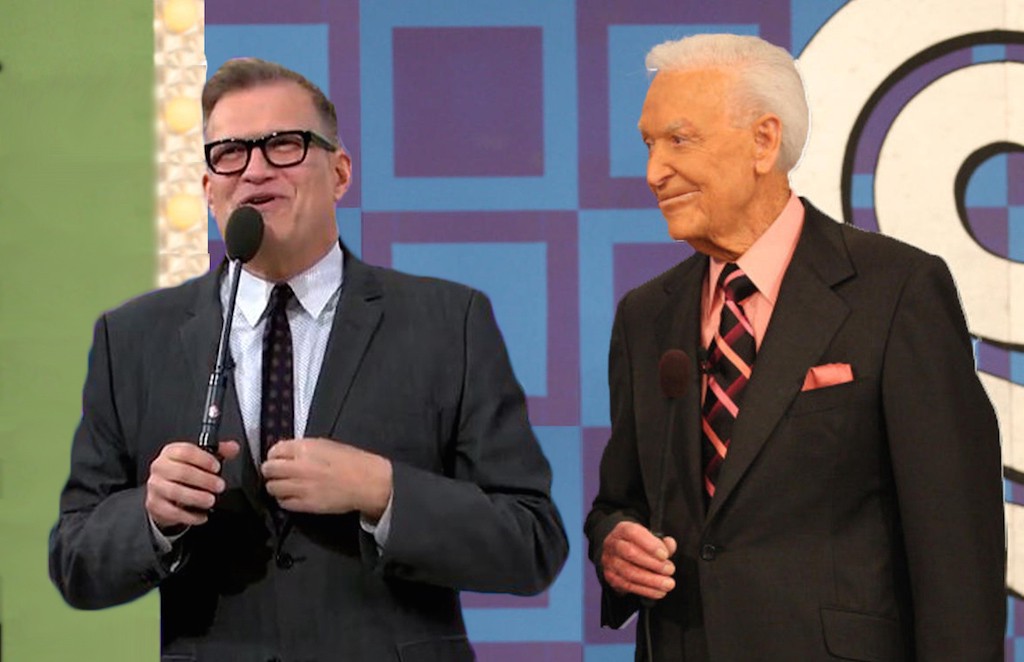
Look at this photo of Bob Barker and Drew Carey. They’re just two friends, sharing a vast body of knowledge about the MSRPs of household goods and a love of responsible pet ownership practices. But imagine for a second, if there was something…more.
You’re a crew member on “The Price Is Right” who’s bounced around the industry for a few years out of college, you’re doing okay, but it’s still early in your career, the bridges you’re going to burn aren’t very long.
“Hmm, what are those two shadows lurking behind the Plinko board?”
“OMIGOD IS THAT WHO I THINK IT IS!?!?!!”
*snaps a few grainy iPhone photos*
It’s probably not what you think it is, but you’re going to offer those photos to that scuzzy paparazzo you met at SUR for a quick fifty bucks.
And then the next day the news is blaring in the National Inquirer: MAY-DECEMBER ROMANCE SPRINGS UP BETWEEN TVS HOTTEST DAYTIME GAMESHOW HOSTS
I could go on, however, I am not a fanfic writer — in fact, I am not even a non-fic writer. I possess a small blue checkmark (which I probably do not deserve), meaning people on Twitter are required to take me seriously. This got me thinking to myself, “Joe baby, you need to get yourself some scoops to let people know you’re the real deal!!” Show them you’re someone with exclusives and embargoes. Someone who wrote tktk once.
Then one day my coworker said to me, “Hey, imagine if the Property Brothers kissed?? They seem like they do that and I would very much like to see it.” And I says to her, “Oh, they have, and I have the exclusive footage to prove it.” And after just a few minutes, the story broke!!
EXCLUSIVE FOOTAGE: PROPERTY BROTHERS KISSING FOR THE FIRST TIME pic.twitter.com/weZFMNNjtd
— Toenails (@joetoenails) February 25, 2016
From then on, I knew any story about male celebrities kissing could be mine, no matter how wild. After all, the best thing about being a journalist in 2016 is that you get to make up any story you want!!! So I give the people what they want, which is lies. But real lies! With real(ish) facts! Who cares if the facts were manufactured poorly in Photoshop?? Nobody! And less so me! Welcome to New York Channel Zero, home of taglines like “none of the news never.”
HOLY SHIT, THE WHITE HOUSE DOES NOT WANT YOU TO SEE THIS!! OBAMA AND TRUDEAU CAUGHT SMOOCHIN!!! pic.twitter.com/828JSIYrw4 — Toenails (@joetoenails) March 10, 2016
I’m a one-man media rag with a cracked version of Photoshop tweeting at a breakneck pace, I can’t be stopped! Plus, I’m the most transparent (0% opacity) news source out there! You can see my whole editorial process from “layer via cut” to “save for web and devices.”
WOW! EXCLUSIVE DELETED SCENE FROM BATMAN V SUPERMAN!!! A SUPERHERO SMOOCH!! pic.twitter.com/YYAy2hSJod — Toenails (@joetoenails) March 29, 2016
And do you know what else? Being bad at something is hilarious. I am bad at a lot of things, including Photoshop and investigative makeout journalism. But that hasn’t stopped me from pursuing both those things. In fact, it’s inspired me. My power is limited only by my own imagination and the photos I can find by searching “Michael Strahan kiss,” literally nothing else!! Not reality, that’s for dang sure! Look, not everyone should kiss everyone. But when it comes to two famous people, they should probably definitely just kiss.
OH MY GOD THIS IS WHY MICHAEL STRAHAN LEFT!!!!!11!! UNBELIEVABLE FOOTAGE!!!! pic.twitter.com/sYkronS9u5 — Toenails (@joetoenails) April 22, 2016
They’re (I assume) doing weird rich people stuff anyway, so is it too far out of the bag to imagine them kissing? The ideas are already rumbling grumbling around in people’s heads, just look at all the Finn/Poe stuff out there!! Or Cruz/Trump!!
EXCLUSIVE: TRUMP AND CHRISTIE KISSING FOR THE FIRST TIME. RUBIO STUNNED!!! pic.twitter.com/x1R3YAH4I1 — Toenails (@joetoenails) February 26, 2016
(Oh it is all out there, my friend). I just provide a shuttle service for the imagination with my extremely limited skill set. I can’t get us all the way there, but with a few copy and pastes, we’re halfway to smooch-ville.
It’s 2016, I can find pictures of almost any two famous guys together so I’m gonna keep doing the thing. And if I can’t, I can still make them kiss — trust me.
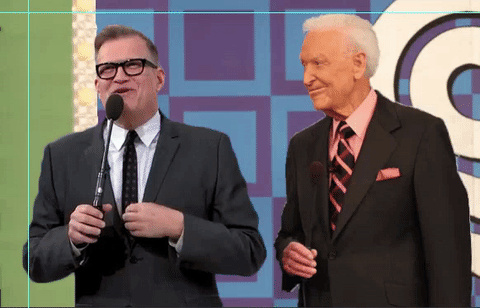
The Song Is Ended
“When Other Music, the scrappy East Village record store, opened in 1995, it existed in the shadow of Tower Records, which ran the entire city block across East Fourth Street. By 1998, Virgin Megastore was a short walk away in Union Square…. As sales of physical music continue to plummet, a no-frills independent record store makes increasingly less sense as a business: Other Music will shut its doors and mail-order service on June 25, more than 20 years after its debut in this once artistically vibrant neighborhood.”
— Ugh, I still think of Other Music as the new record store. That says more about me (mostly: I am old) than anything else, but also, you know, everything ends. That’s how it goes. I don’t remember the last time I stepped inside Other Music, and I pass it at least three times a week, so I guess I can’t really whine about it too much. I mean, basically I’m part of what’s wrong with New York now if I’m honest about it. Me, Alex Balk. Anyway, what the fuck, 1995? How is that even possible?
Working Titles For New York Magazine's New Pop-Up Blog For Men
by Kyle Chayka and Kevin Nguyen
.@NYMag is a “pop-up blog” machine. Next up is Beta Male, to be edited by @aarongell. pic.twitter.com/RjbSWRJxQA
— Joe Pompeo (@joepompeo) May 6, 2016
“BETA MALE: That’s the name of a new “pop-up blog”… that New York magazine will debut on May 16 as a men’s counterpart to women’s style website The Cut.” — Politico
The Cuff
The Snip
Wolf Pack
Men+1
E-Male
You’ve Got Male
Beyoncé for Men
Gazer
Stacked
Hard On
Dickhole
Betamax
Male-io Beta-li
Bae da Male
Return of Kings
Imagine Dragons
XOXY
xoJohn
It Happened to Men
[Eggplant emoji]
The New Man Times
The New Porker
Morning Wood Daily
Manweek
Manweek (but not just weekly, all the time)
Men’s Journal
The Manbun
Matt McGorry
